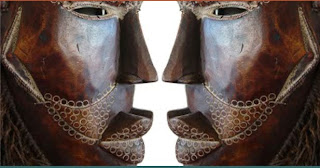Preservationists from all over the country will experience a half-day’s worth of Buffalo’s rich African-American history when they convene here for a conference in the fall.
The National Trust for Historic Preservation has approved a joint submission from two local groups that will be included on the group’s official conference agenda in October.
“This is important. I really do believe we can do some good things for arts organizations of color,” said Glendora Johnson-Cooper, chairwoman of The Collective Buffalo.
The collective consists of six cultural arts organizations: Colored Musicians Club, El Museo, Locust Street Art, African Americancq Cultural Center, Buffalo City Ballet and Nash House Museum.
Partnered with Michigan Street Baptist Church, the collective will present a living history project based on a 2005 program that commemorated the 100th anniversary of the Niagara Movement. Various members of the collective will have roles in the presentation.
“Sanctuary to Speakeasy” will take visitors back in time to Buffalo circa 1905. Actors dressed in period clothing will portray important figures of the era, including the Rev. Jesse Nash and Mary Talbert, who opened her home in 1905 to Dr. W.E.B. DuBois and other organizers of the Niagara Movement, forerunner of the NAACP. Talbert became a board member of the NAACP, which honored her in 1922 with the Spingarn Medal for distinguished merit and achievement. She was the first black woman to receive the honor.
Nash, the son of a freed slave, was pastor of Michigan Street Baptist Church from 1892 to 1953 and became one of Buffalo’s most prominent black leaders during the first half of the 20th century.
As the name suggests, the “Sanctuary to Speakeasy” program will start at the church, where the actress portraying Talbert will host a meeting to discuss issues of the time period. “It was a tense time, the early 1900s,” said Johnson-Cooper. “It was the first wave of mass awareness that [African-Americans] were full citizens, and we wanted to exercise our full citizenship. It was during a time period many African-Americans were being lynched. African-Americans were demanding rights.”
After the discussion, half the audience will proceed to the church’s basement, where its caretakers say runaway slaves hid while waiting to cross the Niagara River to freedom in Canada. The other half of the visiting historians will be escorted by the actor portraying Nash to the nearby Nash House Museum, where tour guides will take them through the historic site. Then the two groups will switch.
In the church basement, the preservationists will experience what it was like to hide out on the Underground Railroad, and an actor portraying church founder Samuel Davis will discuss the significance of the site.
Finally, all of the participants will meet up at the Colored Musicians Club on Broadway, where musicians will put on a show for guests as an emcee talks about some of the famous people who have performed at the club.
Club President George W. Scott said he hopes a museum now being constructed will be up and running by then. It will showcase the evolution of jazz and the history of the club, which was founded in 1935 for African-American musicians who were prevented from socializing with their white colleagues after performances.
The museum will have a new stage area, a renovated lobby and reception area and a new museum shop. It also will have interactive displays that will let visitors simulate experience what it’s like to play an instrument in a jazz band, Scott said.
Many groups within the collective will have a role in “Sanctuary to Speakeasy.” The African American Cultural Center will provide choir members, performers, cast and direction. During the speakeasy segment, the Colored Musicians Club will provide musicians. The Buffalo City Ballet will provide choreography.
In addition to the re-enactments in Buffalo, a “Niagara Day” proposal for a day’s worth of activities featuring Niagara County’s black history also was submitted to the National Trust.
Conference-goers would arrive in Niagara Falls at about 10 a.m. and return to Buffalo at about 11 p.m., said Kevin Cottrell, a member of the Underground Railroad Commission and coordinator for the North Star Project, which is creating the Interpretive Center on the Underground Railroad in the U.S. Customs House on Whirlpool Street.
“Niagara Day” organizers have not yet heard back from the National Trust on whether their submission was approved.

